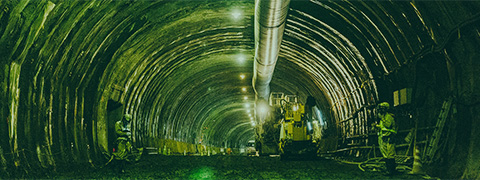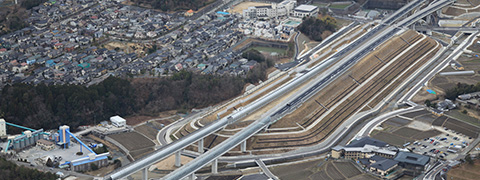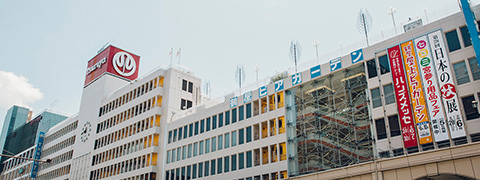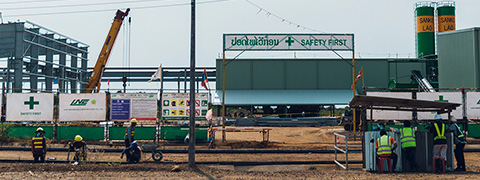
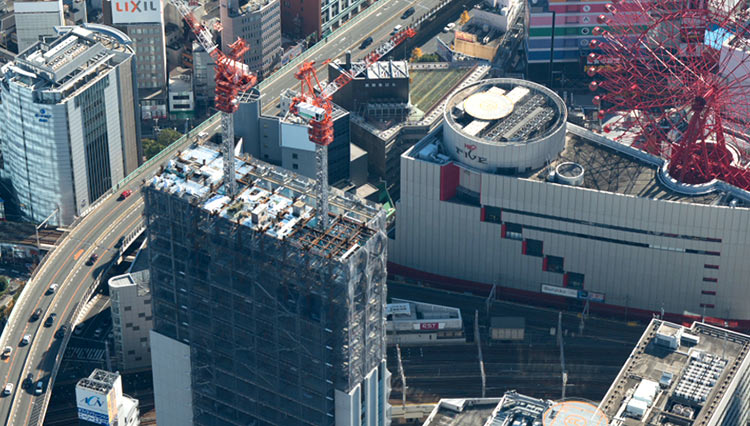
Overcoming difficulties with experience and a flexible approach
Project for the Construction of the (tentatively called) New Umeda Campus of Josho Gakuen
Umeda in the city of Osaka is a location that often gets people talking. The soft ground there has posed difficulties for many contractors. The level of difficulty in construction increases dramatically as different factors become more intricately involved.This project for a university campus in the central part of the city was one that construction professionals approached with a great sense of pride.
Project for the Construction of the New Umeda Campus (tentatively called) of Josho Gakuen
Osaka City Land Rezoning Project for the Chayamachi District
Block No. 1, Lot Numbers [3] and [4]
Josho Gakuen (incorporated educational institution)
Hattori-Ishimoto-Yasui Design and Surveillance Joint Venture
Kansai Branch, Nishimatsu Construction Co., Ltd.
School (university)
Site area: 4,650.47m2、Top height: 125.10m
Structure: Steel-frame and steel reinforced concrete structure、Construction area: 2,416.21m2、Total floor area: 33,240.24m2
22 aboveground floors, two basement floors, and a one-story penthouse
September 30, 2013 to October 31, 2016
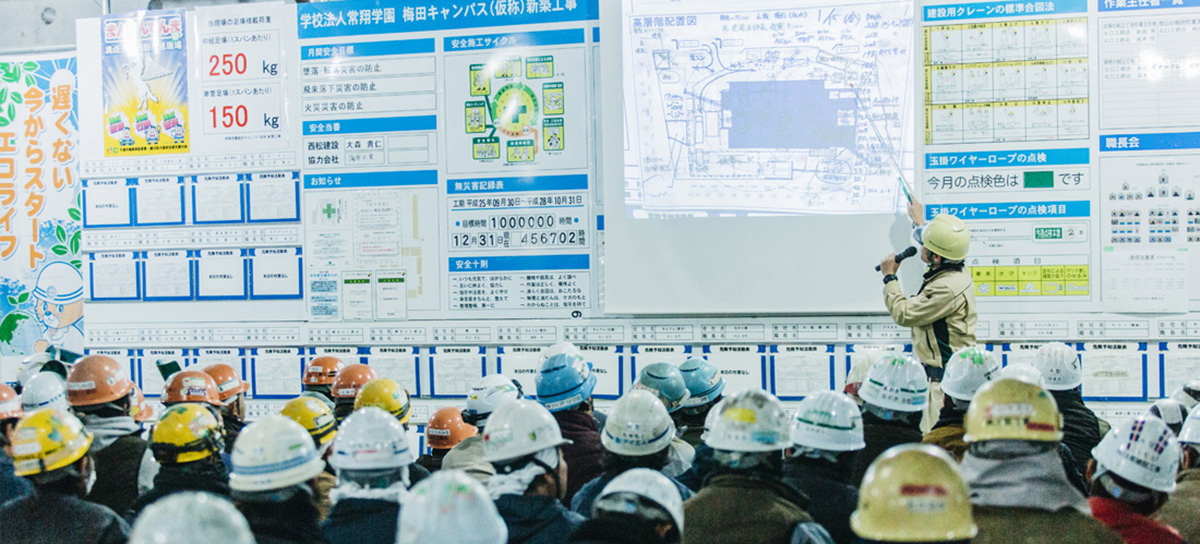
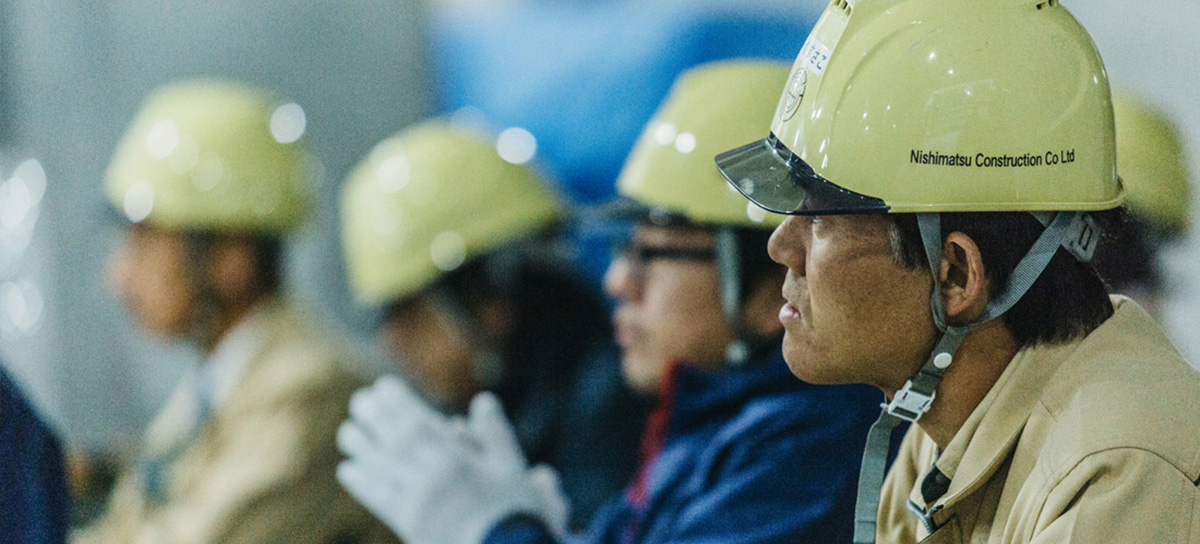
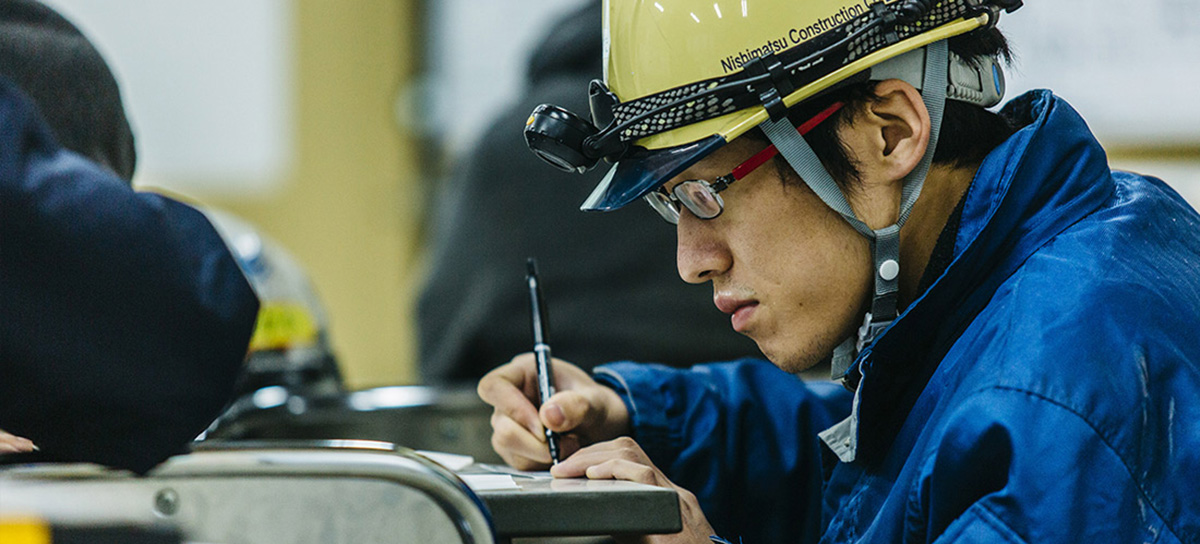
Building a university campus for the new era at Umeda in central Osaka
Nishimatsu Construction is currently building a university campus tower with 22 aboveground floors and two basement floors in the area near JR Osaka Station, a major hub for different railway lines and commercial facilities. The client for this project is Josho Gakuen, an incorporated educational institution. The construction of this tower is part of the institution’s centenary commemoration project, and thus it incorporates various appearance and facility features strongly desired by the designer, making it a test of Nishimatsu’s technical capabilities as a construction company. The building will house the Osaka Institute of Technology containing lecture rooms, a multi-purpose hall capable of holding approximately 600 people, restaurants and other facilities, which serve as an urban space that brings together the industrial, government, academic and private sectors. It was selected in 2013 by the Ministry of Land, Infrastructure, Transport and Tourism as a leading project in the reduction of CO2 emissions from housing and buildings. It is also Japan’s first private building project certified as a project for the construction of new low-carbon buildings and other facilities and thus has attracted a lot of interest from different sectors. To meet the aspirations and expectations of many people, the Nishimatsu personnel on site have been working with a heightened sense of concentration, which in turn has given rise to careful construction management.
Resolving the inherent difficulties on site…
Drawing upon a wealth of experience to tackle issues “underground.”
This project has encountered many different difficulties, with the greatest lying underground. The ground in the Umeda district is extremely weak and contains a large amount of water. Over the years we have heard of the trouble other companies have faced trying to build there. For this reason, we have worked very carefully on the underground work before actually starting construction. The weak ground runs all the way down to the bearing strata. We discussed which measures were necessary and effective in preventing the ground from collapsing and water from seeping out. “We spoke with those who had worked in Umeda as well as many outside operators with a lot of experience doing construction on similar sites with weak ground,” says Mr.Nakasuji, project manager. “Naturally, Nishimatsu also has a wealth of experience in all kinds of situations. We gathered the opinions of experienced staff from all over the country and spent a considerable amount of time studying measures. All the personnel in the head office and on the construction site worked together to manage the challenging ground conditions.” He explained the main feature of construction, saying that “instead of working to minimize the cost, we place the greatest importance on seeking safety, which makes Nishimatsu Construction different from others.” His tightly closed fist alluded to the degree of attention given to measures to address underground difficulties. “We can think about the process flow when we build above ground. However, no one knows what will happen underground until we actually start excavating. Something that seems viable by calculation might not be a practical solution in actual construction. We have moved forward with the project while carefully managing each aspect, but now it is essential that we conduct checks in preparation for completion.” Full concentration must be maintained until the end of the project.
To shorten the work period, the project employs a top down construction method in which the aboveground work and the underground work are carried out at the same time. It means that the underground work is responsible for structural stability while all the other work is being performed. In maintaining the balance between the height and the basement, we also pay attention to the characteristics of the ground. The construction of a magnificent high-rise tower campus is founded upon our hidden struggle to conquer the soil underground.
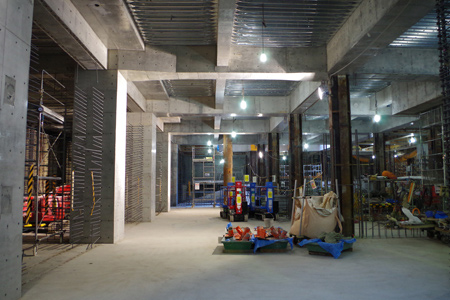
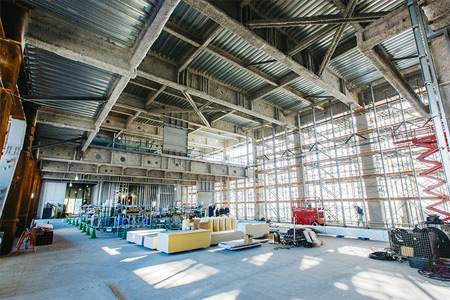
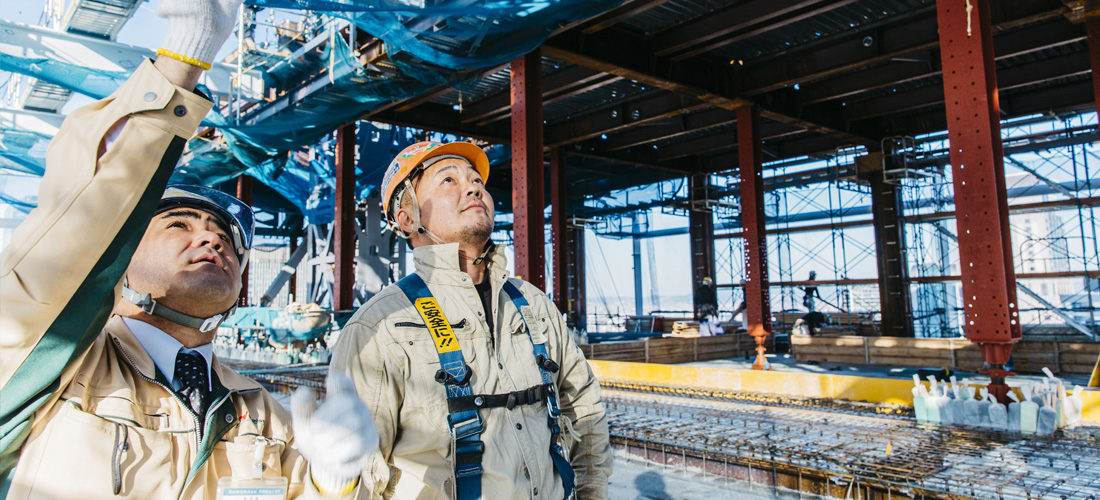
What does it mean to build from the client’s perspective?
“Every single building is original and unique.
Ideas must be worked out on a case-by-case basis!”
Our engineers undertake construction work with pride, motivated by our commitment to offer clients satisfaction and reassurance. The site stands practically next to JR Osaka Station and the elevated railway tracks, meaning that a single accident could disrupt train operations and affect many people across the Kansai region. “The safety of trains is the top priority. Working in cooperation with West Japan Railway Company (JR West), we keep our guards stationed at the site, by the tracks, and on the Osaka Station platforms in the event of foundation work. We stop the crane operation each time a train comes.” Naturally, it is essential to take into consideration all the vehicles and pedestrians that are passing by the site. We remain on our guard each day and implement safety management at all times.
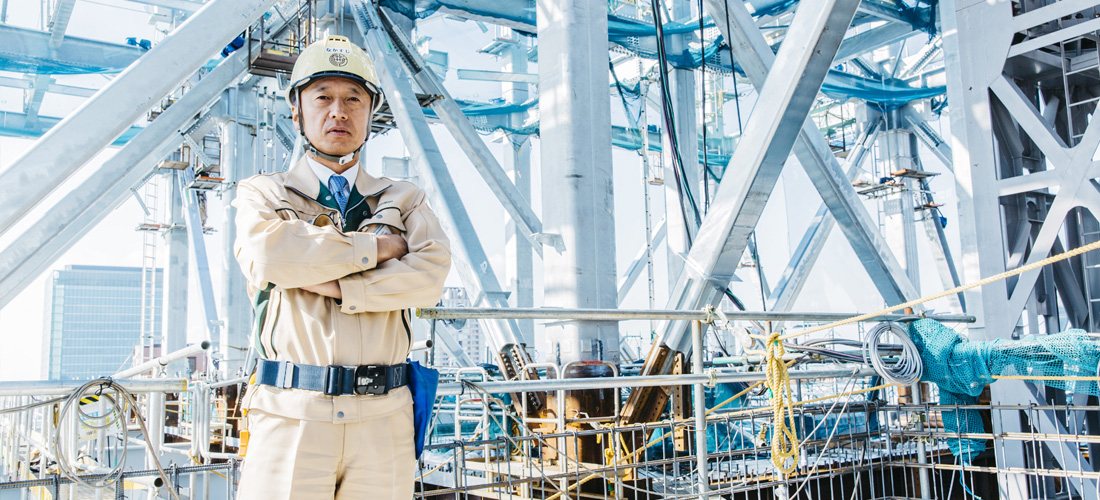
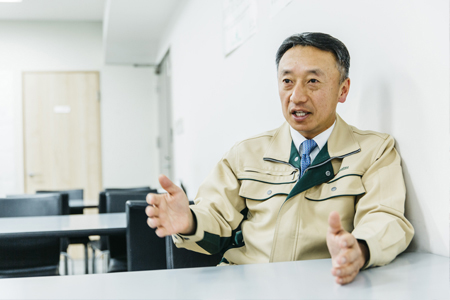
Meeting the client’s expectations not only involves attending to safety, but also ensuring that the building looks good. As part of Josho Gakuen’s centenary commemorative project, the Josho Gakuen Umeda Campus (tentative name) is designed to have a unique look and introduce many different facilities. Each side of the building has its own look, and it is impossible to construct the four sides at the same time. “The north side will have a glass curtain wall suspended from the top floor. Unlike the other sides, it is impossible to install glass panels in order from the lowest to highest level,” explains Mr. Nakasuji. “Even so, we hold solid discussions with different operators to coordinate the schedule with all the parties concerned, ensuring that construction work progresses efficiently. After all, collaboration is the key to finishing the project in line with the clients’ requests, no matter how unusual they may be. Construction becomes more difficult when greater priority is given to the exterior look. In addition, every single building is original and unique. No matter how much experience we have, no building is exactly identical to another. We all work out ideas while managing costs to finish the project by the requested deadline. Construction companies require a variety of technologies and ideas to satisfy the requests for the external appearance of a building.” We believe that approaching work from the client’s perspective and our flexible response capabilities offer customers the satisfaction and reassurance they seek.
Inspiring a sense of professionalism in every single worker and demonstrating the capacity to carefully manage construction
While this project has captured the interest of the public, it faces an intricate web of difficulties in location and construction. The project manager believes that the professionalism of each individual is the most important in the process of giving shape to the building through various verifications in close attention and in collaboration among all the personnel concerned as construction professionals. “No matter how many commands are given by the organization leader, there will be no communication if people are not motivated. However, people naturally come together as a team when every single worker has a sense of pride and is highly motivated as a professional. There are 300 to 400 workers at this construction site who do their duties every day, with newcomers every day getting involved depending on the nature of the task. We spend a lot of time helping these newcomers become familiar with the site, in hope that all those involved will have the passion and motivation to tackle the project. Thus far the project has involved a total of 2,800 workers and I have met with each and every one of them face to face. I make sure I recognize each worker, and clearly tell them what they need to be told on their first day. That’s my philosophy. Paying attention to each worker is vital to creating a good worksite. I believe that it is the essence of building a team.”
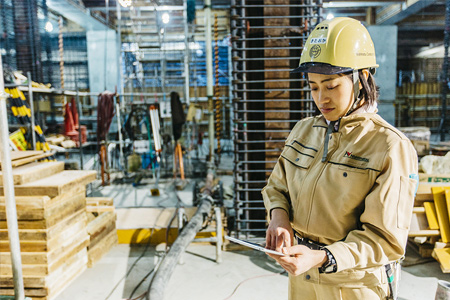
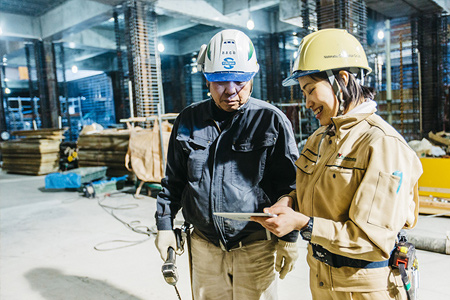
The team for this project became the first team in Osaka Prefecture to be recognized as a Nadeshiko Construction Team (under a scheme established by the Japan Federation of Construction Contractors and renamed “Kensetsu Komachi Construction Team” in January 2016). This honorary name refers to the fact that female engineers play key roles on the team. In the important underground work, female engineers also demonstrate their abilities. Careful construction management would be impossible without individual workers who are aware what it means to be a professional and apply their respective expertise and skills. As the final phase of the project moves toward completion, the integration of this passionate professionalism will help ensure a campus is delivered to the many people who eagerly await it.






